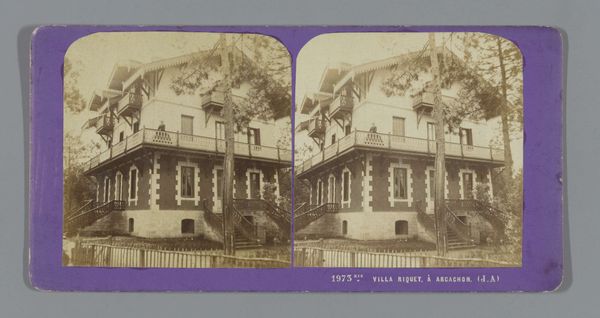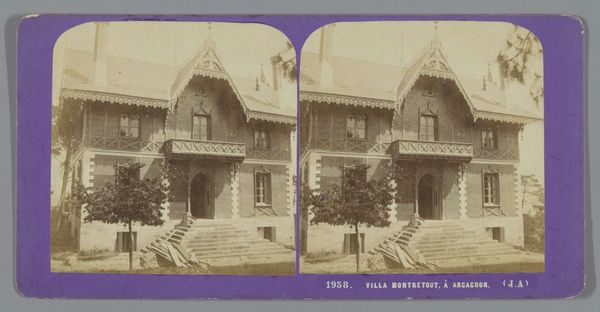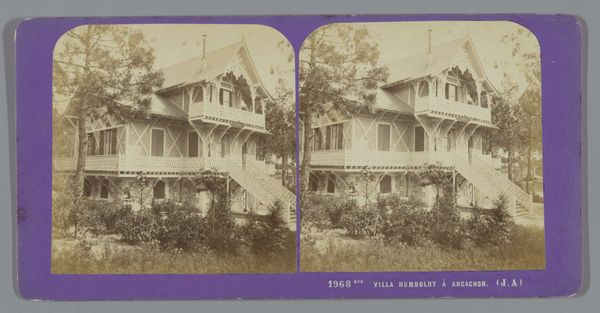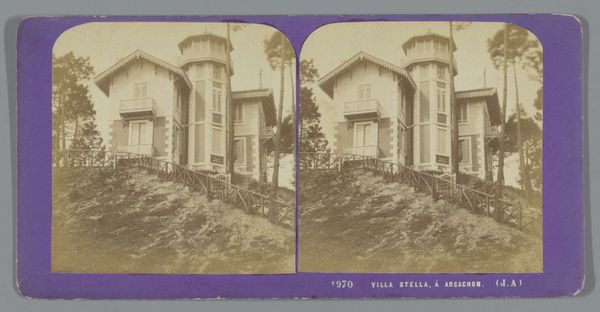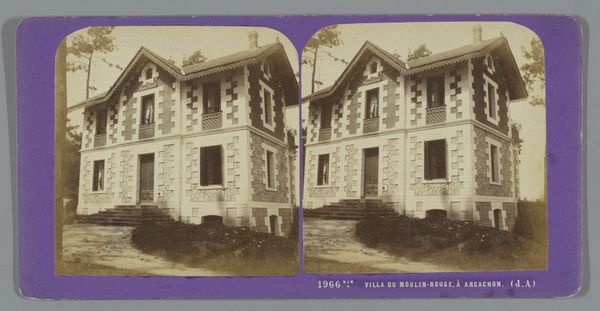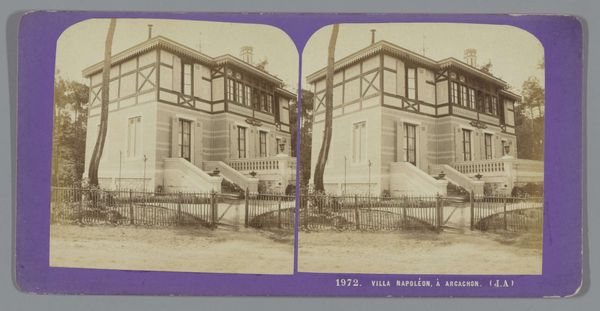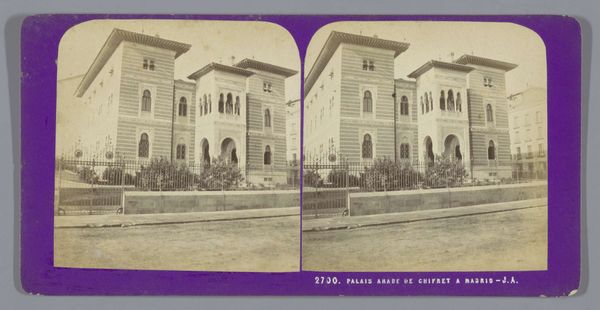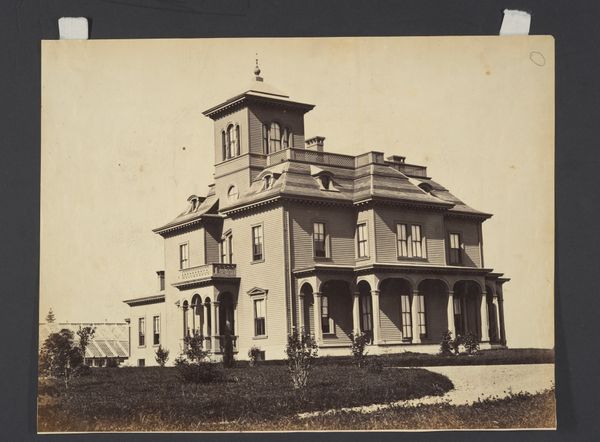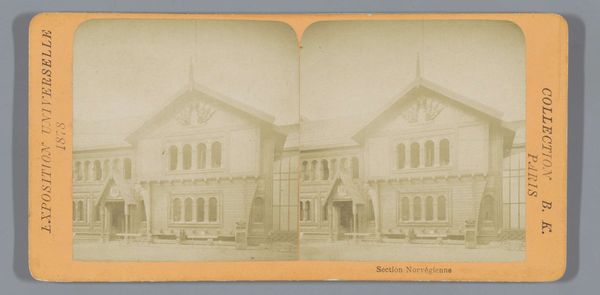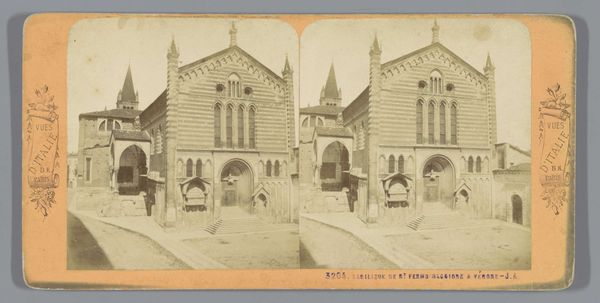
photography, architecture
#
landscape
#
photography
#
architecture
Dimensions: height 85 mm, width 170 mm
Copyright: Rijks Museum: Open Domain
Curator: This is a stereoscopic photograph taken sometime between 1862 and 1876 by Jean Andrieu. The print showcases the exterior of Villa Halévy in Arcachon. It’s fascinating to see these early experiments in creating a sense of depth. Editor: My immediate impression is the rigorous composition. The architectural structure, meticulously captured in the light and shadow, create such compelling geometric forms. Curator: It’s certainly a striking piece of architecture. Villas like Halévy became potent symbols of bourgeois leisure in burgeoning resort towns. Architecture and photography, working hand in hand to construct and disseminate an image of social mobility. Editor: Absolutely, but let’s not overlook Andrieu’s skillful control of tone and texture. Note how the horizontal banding on the façade meets with vertical towers—it emphasizes form while using light to define those very forms. Curator: What intrigues me most is how this stereograph was experienced by its contemporary audience. Imagine someone viewing this image through a stereoscope, suddenly transported to this fashionable locale! It speaks to a new culture of tourism and spectacle. Editor: I agree. This type of photography offered not only documentation but also aesthetic experience. Andrieu understood that even architecture is reducible to elemental shapes—it communicates as much through form as function. The placement of the building against a hazy, out-of-focus background creates an intriguing play with flatness and depth. Curator: Photography, during this period, truly became a powerful tool for shaping perceptions and desires. The villa becomes an aspiration—a visual representation of success and modernity—effectively democratizing the dream for those who consumed images like these. Editor: Looking closely, it is how those stark, white walls absorb and deflect sunlight—an indication that Andrieu understood the semiotic power of composition as a vehicle for meaning. Curator: Precisely. It prompts us to consider the photograph as an artefact interwoven within intricate historical contexts and social values. Editor: The play of lines and light suggests the potential of architecture and photography, and art in general, as a self-referential system. What is presented to the eye here, exceeds mere documentation and ascends into the realm of high aesthetic articulation.
Comments
No comments
Be the first to comment and join the conversation on the ultimate creative platform.
